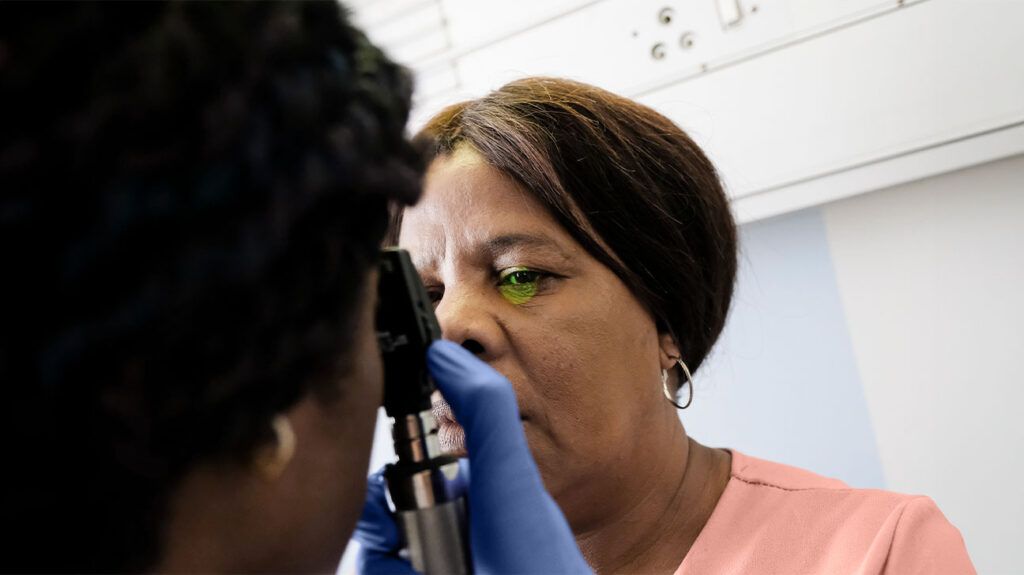A nuclear cataract is a type of cataract that affects the center — nucleus — of the eye’s lens. Typically, cataracts involve clouding or the opacification of the eye’s natural lens, which can cause vision problems.
Cataracts are very common in older age.
The eye’s lens is
Doctors sometimes refer to nuclear sclerotic cataracts as nuclear cataracts. The term “sclerosis” refers to the hardening of body tissue. As these cataracts advance, the cloudiness may extend from the nucleus to other layers of the eye.
This article outlines the symptoms, causes, diagnosis, and treatment of nuclear cataracts.

A nuclear cataract specifically refers to a type of cataract that
Read about different types of cataracts.
Some of the symptoms associated with a nuclear cataract
- Gradual decline in vision: People with nuclear cataracts often experience a slow and progressive reduction in their vision over time.
- Blurred vision: The lens becomes increasingly cloudy, leading to blurred or hazy vision, especially when looking at distant objects or in low light conditions.
- Difficulty with near vision: Reading and close-up tasks may also become more challenging.
- Changes in color perception: Colors may appear faded or yellowed due to the cataract’s effect on the lens.
Aging is the most significant and common factor contributing to the development of nuclear cataracts. The eye’s lens contains water and proteins. The precise and orderly arrangement of these proteins maintains lens transparency.
As people age, these proteins in the lens undergo various structural and chemical alterations, becoming less stable. This instability can
Risk factors for nuclear cataracts include:
- Genetics: Some people’s genetic makeup may predispose them to developing cataracts.
- Smoking and UV exposure: Smoking and prolonged exposure to UV light from the sun or artificial sources
may increase the risk of developing cataracts. - Medical conditions: Certain medical conditions, such as diabetes, can
increase the risk of cataract formation. - Medications: Some medications, such as corticosteroids, may
increase the likelihood of cataract development. - Eye injuries or trauma: Physical injury to the eye can sometimes lead to cataract development.
Diagnosing nuclear cataracts typically involves a comprehensive eye examination by an eye care specialist, such as an ophthalmologist or optometrist.
The eye doctor will use a slit-lamp biomicroscope, which provides a magnified view of the eye’s structures, including the lens. This allows them to examine the clarity and condition of the lens, looking for signs of opacification or clouding associated with cataracts.
To get a better view of the lens and its internal structures, they may use dilating eye drops to enlarge the pupils temporarily. This allows for a more thorough examination of the cataract and its severity.
The treatment for nuclear cataracts typically involves surgical intervention. Cataract surgery is one of the
The treatment process typically follows these steps:
- Preoperative evaluation: An ophthalmologist will assess the cataract’s severity and a person’s overall eye health through various tests, including visual acuity testing and measuring the size and density of the cataract.
- Surgery: The surgeon will remove the cloudy natural lens and replace it with an artificial intraocular lens (IOL). The surgery is typically quick and painless, and a person can go home the same day.
- Recovery: Most people experience a rapid improvement in their vision following cataract surgery. Recovery is generally straightforward, and people often return to their normal activities within a few days to weeks.
- Postoperative care: After surgery, a person may need to use prescription eye drops and follow the surgeon’s instructions for a certain period to promote healing and prevent complications.
Genetics play a key role in people’s likelihood of developing nuclear cataracts. However, several lifestyle and dietary practices may help reduce the risk of developing cataracts or slow their progression.
- Eye protection: There is an association between UV exposure and an increased risk of cataracts. People should wear sunglasses that block UVA and UVB rays outdoors, especially in sunny conditions. They should also take precautions to prevent eye injuries, such as wearing protective eyewear during sports or activities that pose a risk of eye trauma.
- Quit smoking: Smoking is a risk factor for cataract development. People who smoke should quit as soon as possible.
- Maintain a healthy diet: Antioxidants may help protect the eye’s lens from oxidative damage. People should eat a diet with a rich variety of fruits and vegetables to ensure a good intake of antioxidants and vitamins.
The outlook for people with nuclear cataracts is generally favorable if they have surgery. Cataract surgery improves visual acuity for
Untreated cataracts can lead to gradual vision loss and even blindness, severely impacting a person’s daily activities and quality of life. A 2023 systematic review and meta-analysis also found an association between visual impairment in older adults and an increased risk of dementia and cognitive impairment.
Here are the answers to some frequently asked questions about nuclear cataracts.
Is a nuclear cataract serious?
Nuclear cataracts are a common age-related eye condition. While they can cause vision problems, doctors do not
Cataracts are highly treatable with surgery, which is an effective and safe procedure. Cataract surgery
What is the difference between a cataract and a nuclear cataract?
A cataract is a general term that describes the clouding or opacification of the eye’s natural lens, which
Eye health resources
Visit our dedicated hub for more research-backed information and in-depth resources on eye health.
Nuclear cataracts are the most common type of cataract. They cause the center of the eye’s lens to become cloudy, affecting a person’s vision.
Several risk factors exist for nuclear cataracts, but older age is the most common.
Cataract surgery replaces a person’s cloudy lens with a prosthetic intraocular lens and is safe and effective. Most people regain their vision after surgery. Without treatment, cataracts can cause vision loss.
